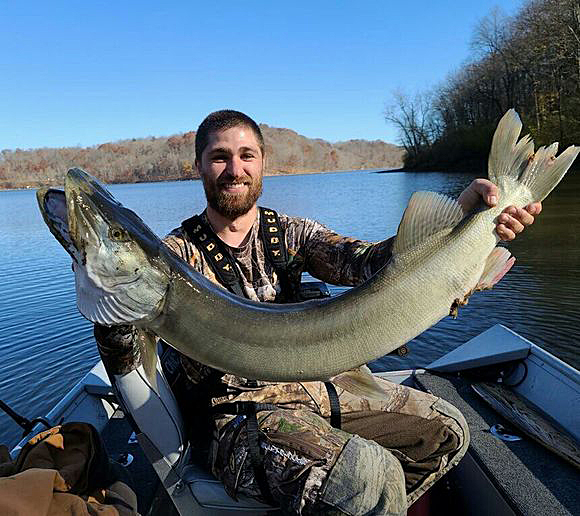
Lazy summer bass need something that either makes noise or motion to make them strike. Spinner baits (above) have worked for generations of fishermen.
Summer heat makes it harder. But if you time it right, and present it right, you can still catch bass if you use these three baits…!
By Ray Reilly for Press Pros
 A friend from the Toledo area once gave me some advice about summer bass fishing.
A friend from the Toledo area once gave me some advice about summer bass fishing.
He said, “The heat makes it harder, on the fish and on you. So make the most of the time you try to catch bass. Play it smart, and use something (bait or lure) that you know works.”
It was sage advice, because it’s obvious that summer heat makes bass more picky about when they eat. And regardless of the heat, when they finally do eat they don’t forget their last meal. Bass, like people, are creatures of habit.
I don’t fish for pond bass as much as I once did. Frankly, I don’t have as many opportunities anymore. Not that I don’t try, but I just don’t spend as much time on the water as I did twenty years ago. So when I go, like the man said, I do my best to make it count.
Early mornings and late in the evening….
Bass, just like you and me, like to be more active in the cooler hours of the day. That said, you can have some great fishing if you’re on the water just after daybreak, or just before sunset. And to the old argument that they don’t strike in the heat of the summer…bass are living creatures that must eat, so assume they will if you present the right bait.
I most always use a crank bait of some kind, that I can vary speed and depth on, simply by manipulating the rod tip. And the trick here is to be persistent. It may take you a half dozen casts with a Rebel or Rapala minnow, but keep throwing it. Repeated action tends to get fish fired up to the point of finally striking out of frustration.
Now I know that color can be a determinate, but in my experience the more natural-looking the bait the more likely you’re going to get a bite. Throw it on the edge of grass and weeds, let it settle for a few seconds, and jerk it on a constant retrieve. Create enticing, wounded action and you’re going to get action. As an additional bit of information, go on the websites of lure companies and watch their demos, because their research if better than ours.
Go back to where you started….
Almost every one of us caught our first bass on a night crawler. So, why wouldn’t that still work? And that’s the reason why there’s so many worm baits of every color imaginable on the market. The action on these baits are even more enticing that the real thing, and if you use some weight to get them down to the level of the fish, you can make a very enticing presentation with a slow and steady retrieve, again raising the lowering the worm through weeds and pads.
Another good thing about using worms is the ability to make them weedless. A single embedded hook, or an embedded hook with a spinner ahead of it slides through the brush without constantly getting snagged. Fish it slowly, and like the crank baits…don’t give up too soon. The Berkley power baits have always been a popular choice, and I’ve also caught countless fish on that company’s ‘Gulp’ nightcrawler, a scented plastic product that just catches fish.
Color? As close to natural as possible, but in murky water you may go for something that’s more visible. Again, go to the bait company websites and look for yourself. They spend a log of money on development of products that work.
Add some flash….
Finally, if there’s a bait out there that’s as prevalent as worms and crankbaits, it has to be the variety of spinner baits/jigs that many use to create a buzzing motion, some bright flashy action, and induce strikes from otherwise uninterested bass.
 Any Bass Pro you go to will have hundreds of offerings from the most complex, to the original design of a Mepps spinner – a simple bucktail hook with either a brass or silver spinner blade in front of it. On big bodies of water spinner baits are particularly effective, and when I fish lakes like Salt Fork, in Guernsey County, spinner baits are often the choice that saves the day.
Any Bass Pro you go to will have hundreds of offerings from the most complex, to the original design of a Mepps spinner – a simple bucktail hook with either a brass or silver spinner blade in front of it. On big bodies of water spinner baits are particularly effective, and when I fish lakes like Salt Fork, in Guernsey County, spinner baits are often the choice that saves the day.
Again, cover is a prime concern for summer bass, so throw a rig that’s as weedless as you can get, and keep it moving in the water. That silver blade catches a lot of attention, and fish that see your presentation long enough will eventually follow it and strike. Trust me when I say that Bill Dance has made a career out of fishing spinner baits.
And for that matter, Bill’s made a career with crank baits and worms, too. And if you ever watch his television show, these are the three baits with which he catches 70% of the fish he gets in the boat.
There’s hundreds of others, but crank baits, worms, and spinners always seem to work.
Good enough for Bill Dance, and good enough for you.
‘Til next time…I’ve enjoyed it.


Coverage of the outdoors on Press Pros is proudly sponsored by Olde English Outfitters, in Tipp City.
